How Should Barefoot Sandals Fit? A Beginner’s Guide to Foot-Healthy Sandals
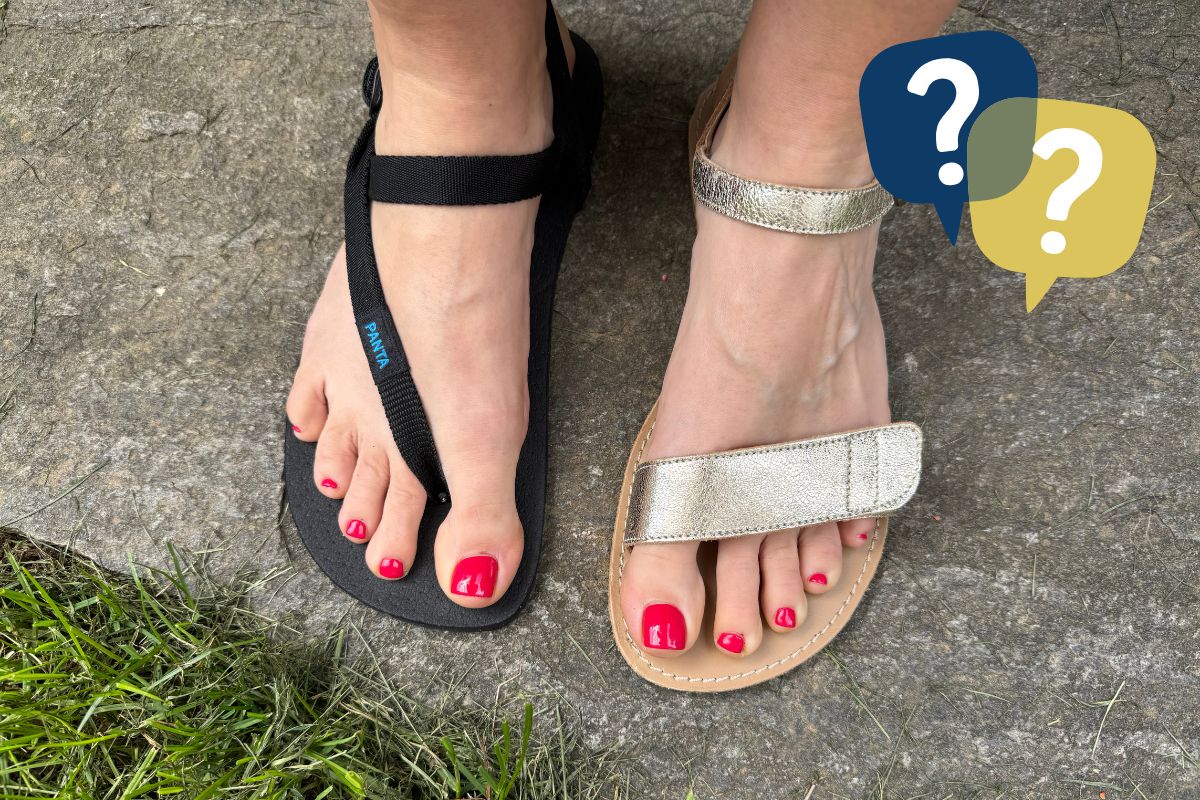
Barefoot sandals are a unique type of barefoot footwear, similar to regular barefoot shoes, but with some special considerations. Unlike regular shoes, sandals require extra attention to proper fit, secure fixation, and suitability for your specific activities. But don’t worry, finding your perfect pair doesn’t have to be complicated!
So, how exactly should barefoot sandals fit? Your sandals should hold your foot securely at the heel and instep without restricting natural movement. Your toes should be able to fully spread and never hang over the edges. There should be enough space in front of your toes to allow for natural foot function, forward motion, and to avoid tripping. Typically, this means around 7–10 mm for most people.
When properly fitted, barefoot sandals don’t just feel good, they’re genuinely good for your feet. They encourage natural movement, help strengthen foot muscles, improve posture, and reduce common foot problems caused by conventional shoes.
In this beginner-friendly guide, we’ll walk you through everything you need to know, from selecting the right sandal size and understanding different types, to making sure they’re the perfect match for your feet and lifestyle.
Let’s dive in!
What Are Barefoot Sandals?
Not all minimalist sandals qualify as true barefoot footwear. To be considered barefoot sandals, a model must follow the same key principles as barefoot shoes:
- Thin, flexible sole for maximum ground feel and foot mobility

- Zero drop, meaning the heel and toe are level for better posture and alignment

- Wide, foot-shaped toe box that lets your toes spread naturally

If you’re new to this concept, check out our full guide on what barefoot shoes are to understand the foundation behind this type of footwear and how it differs from conventional shoes.
But there’s one more crucial aspect for sandals: secure fixation.
Since sandals expose more of the foot, they must stay firmly in place while you move. This means the straps should hold your heel and instep securely, without relying on your toes to grip. Flip-flops and crocs don’t meet this standard. They often force your toes to work overtime just to keep the shoe on, which can lead to long-term foot strain.

Are Barefoot Sandals Good for Your Feet?
Yes, barefoot sandals can be very good for your feet, as long as they fit well and are used appropriately.
Unlike traditional sandals that often squeeze the toes or rely on gripping to stay on, barefoot sandals are designed to let your feet move naturally. They support healthy foot mechanics by:
- Encouraging full toe splay and movement
- Strengthening the muscles in your feet and lower legs
- Improving balance and posture by removing the elevated heel
- Reducing foot strain and pain often caused by restrictive or overly cushioned footwear
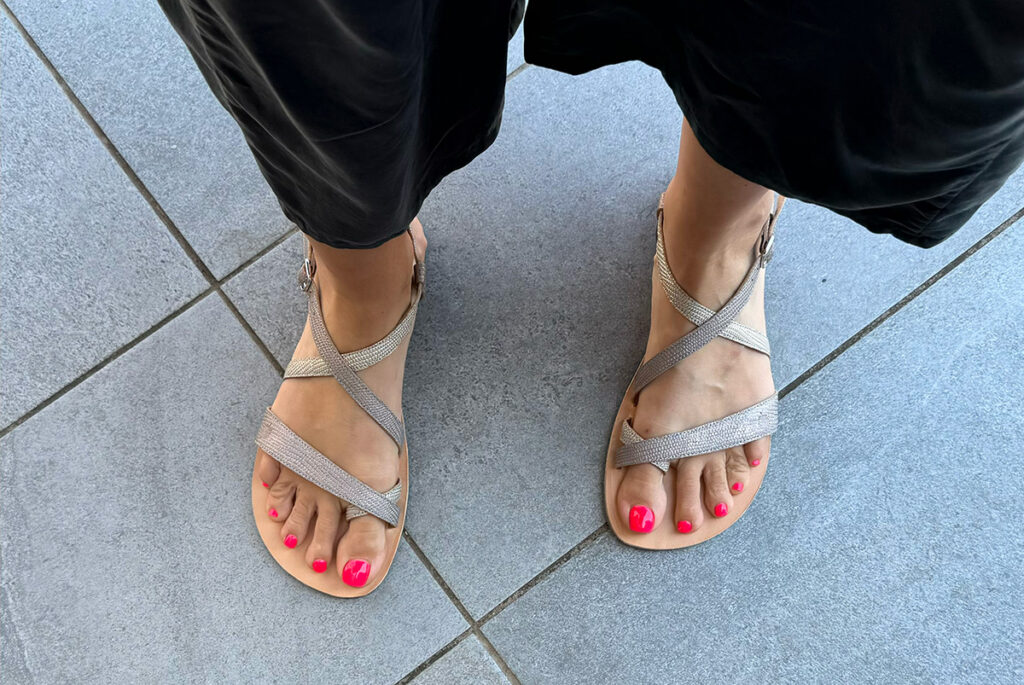
They’re especially helpful if you’ve spent years in tight shoes and are looking to restore natural function to your feet. Just like with any barefoot shoe, the key is transitioning gradually so your body can adapt.
Want to understand more about why barefoot shoes are so beneficial? Don’t miss our full article on the benefits of barefoot footwear.
Types of Barefoot Sandals
There are many different barefoot sandal designs, but they all aim to balance freedom of movement with secure fixation. The type you choose will depend on how and where you plan to wear them—whether for hiking, city walks, work, or special occasions.
Let’s break down the most common types:
Toe Thong Sandals



Inspired by traditional running sandals, this style uses a strap between the toes (usually diagonally) to provide excellent foot fixation with minimal material. It’s one of the most secure options, especially for sports and outdoor use.
You’ll find this lacing method in many multi-sport barefoot sandals designed for hiking, trail running, or everyday wear.
👉 Explore our picks: Best Multi-Sport Barefoot Sandals
But toe-thong sandals aren’t limited to sporty styles. Casual toe-post designs offer a more polished look while still providing solid fixation. These are perfect for everyday wear with jeans, dresses, or summer outfits.
👉 See our top picks in the Best Barefoot Sandals for Women
Cross-Strap Sandals



Cross-strap sandals are popular for their clean design and are often seen in stylish or dressy barefoot models. They don’t have anything between the toes, which makes them a favorite for people who dislike that feeling.
We recommend these for:
- Everyday casual use
- Work and city walking
- Formal occasions like weddings
👉 Looking for something dressy? Check our Barefoot Sandals for Weddings
Cross-strap layouts also show up in active sandals with a Z-strap design. These models can be great for general walking or light trail use, but they typically offer less lateral stability than toe thong or toe loop designs.
👉 For trail-ready options with better grip and support, check our Best Multi-Sport Barefoot Sandals
When fitted well, cross-strap sandals can be stylish, comfortable, and functional. Just be mindful of how and where you plan to use them.
Toe Loop Sandals


Toe loop sandals strike a nice balance between structure and freedom. Instead of a strap running between the toes, this design uses a loop that wraps around the big toe, offering good lateral stability without the classic “flip-flop” feeling.
This style can be a great alternative if you want your toes to stay free but still need secure fixation for walking.
However, the success of this design depends heavily on proper placement and fit:
- The loop should sit comfortably at the base of your big toe, not rub or press against the joint
- It must have the right circumference—too loose and you’ll slide, too tight and it can restrict movement
- The strap over the instep must also fit snugly to prevent shifting while walking
You’ll often see this design in both casual and light hiking barefoot sandals. It’s another versatile option depending on your foot shape and preferences.
Creative & Customizable Designs
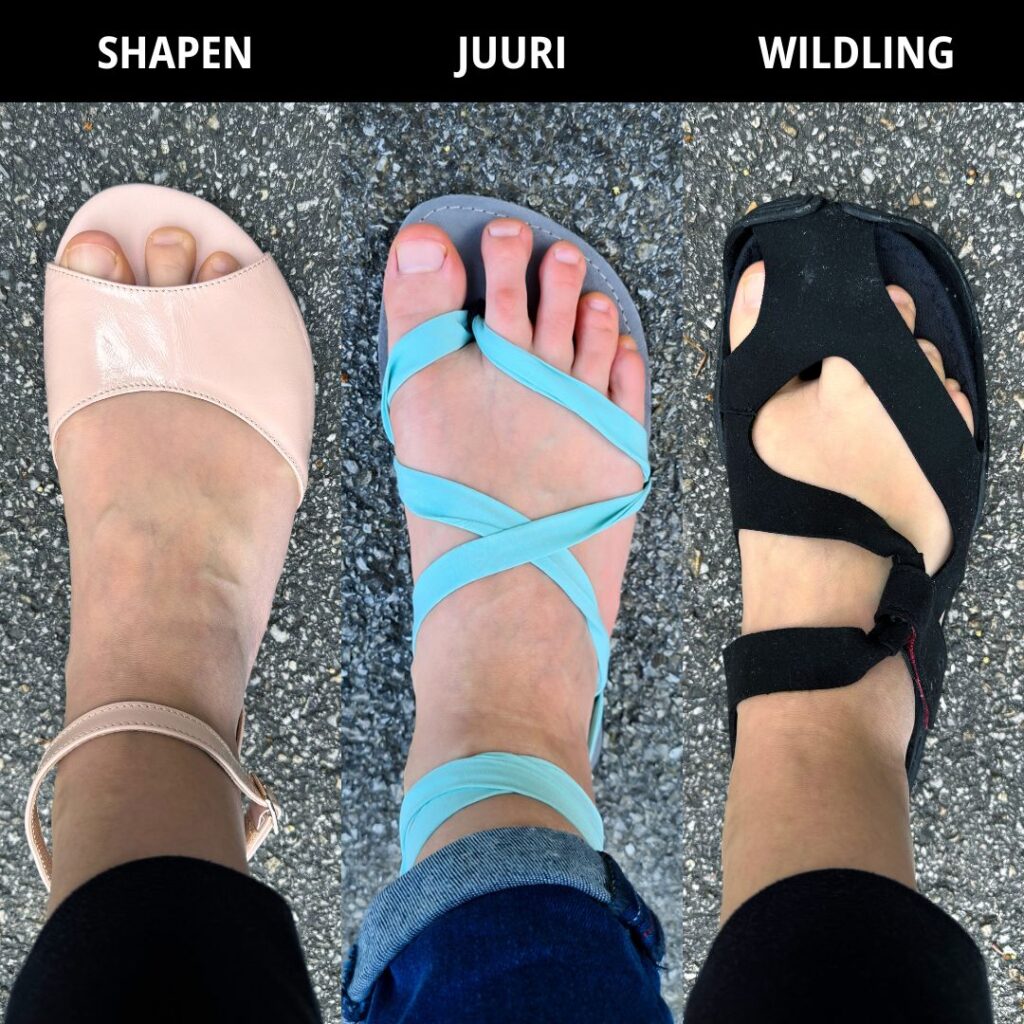
Some barefoot sandal brands go beyond the traditional layouts and offer innovative or fully customizable designs. They’re perfect for those who want more personality, adjustability, or unique functionality in their footwear.
If you’re curious to explore all available options, check out our Complete List of Barefoot Sandals for Adults. And if standard models just don’t work for your foot shape, you might want to explore custom-made barefoot shoes and sandals tailored specifically for you.
How Should Barefoot Sandals Fit?


Fit is everything when it comes to barefoot sandals. Because they’re open and have fewer structural elements than closed shoes, even small fit issues can cause discomfort or lead to poor movement patterns.
Here’s what a good barefoot sandal fit looks like:
- Your foot is securely held at the heel and instep, with no slipping or flopping as you walk.
- Your toes stay completely on the sole, with no overhang at the front or sides, even when your foot flexes.
- The sandal should match your foot shape, especially around the toes. A mismatch here can make even the right size feel wrong.
The strap design also plays a major role in fit. Toe posts, loops, and cross-straps all influence how your foot sits on the sole. If the straps are placed incorrectly, your foot may shift forward or backward, even if the sole length is correct.
Choosing the Right Size
Sandal sizing is more nuanced than with closed shoes because your foot’s shape and toe length are fully visible and exposed. A good size ensures comfort and prevents tripping or pressure points.
Here’s what to look for:
- Open-toe sandals: Leave about 7–10 mm of space in front of your longest toe to allow for foot extension and avoid tripping. However, this can vary slightly depending on your toe length, overall foot and sole shape, and how your heel sits in the sandal.
- Closed-toe sandals: Treat them like barefoot shoes and aim for 10–15 mm of space at the front
- Sole width: All your toes should fit completely on the sole, without spilling over the edges
- Foot shape: Choose soles that follow the natural slope of your toes (steep, square, or rounded)



If your toes are still adapting from years in narrow shoes, it’s smart to choose a sandal that allows for future toe expansion, not just your current foot shape.
In the beginning, your toes might stay within the edges of a narrower sole, but over time, they’ll likely spread out as your foot regains its natural alignment. Choosing a slightly wider or more anatomical model now can save you from needing a new pair next season.


📝 Tip: Use printable templates offered by many brands. They’re incredibly helpful for spotting fit issues before you order. These templates show not only the sole shape and length, but also where the straps attach, which can significantly affect the final fit.
👉 Fit check: Place your foot on the template and make sure the dot marking the toe post lines up with the crease between your big toe and second toe.
👉 Need help determining your foot shape or width? Try our Foot Width Quiz and read What Is My Foot Type?
Even if the length and shape are right, a sandal can still feel off if it doesn’t stay securely on your foot. Proper foot fixation, especially at the heel, instep, and toe area, is just as important as sole fit.
Let’s take a closer look at why this matters.
Foot Fixation: Why It Matters
Proper fixation is one of the most important aspects of barefoot sandals. Without enough security, your foot can slide around, forcing your toes to grip the sandal and creating tension in your muscles. This is exactly what barefoot footwear is designed to avoid.
Good fixation means the sandal moves with your foot, not against it.


✅ What to look for:
- A strap that holds the heel securely in place
- A snug fit over the instep to prevent sliding
- Enough structure to keep your toes relaxed and not gripping
Some sandals come with extra “power straps” for better midfoot hold, especially useful during longer walks or on uneven terrain. If the strap across the instep isn’t adjustable and feels too tight or loose, it’s best to choose a different model or go for one with strap customization.
Strap Placement and How It Affects Fit
In barefoot sandals, it’s not just the sole shape and length that determine fit—strap placement plays a major role in how the sandal feels and functions.
Even if two sandals have the same sole shape and size, they can feel completely different depending on where the straps are positioned. This is especially true for toe posts, toe loops, and heel straps, which directly influence how your foot sits on the sole.


👉 Key things to look for:
- Toe post (thong) position: The post should align with the crease between your big toe and second toe. If it’s too far forward or back for your toe length, it can cause your foot to sit improperly on the sole.
- Instep strap placement: If the strap sits too low or too far forward, it may not hold your foot securely.
- Cross-strap sandals: The strap should sit over the toe joints, not press against them, to allow free movement. Also pay attention to the strap circumference—it should be snug but not restrictive. Models with adjustable velcro or buckle straps allow you to fine-tune the fit. If adjustment isn’t possible, choose a design where the strap naturally fits your foot well without limiting toe movement.
- Toe loop sandals: The loop must be placed just right. It should allow your big toe to move freely into its natural position. If it pushes the toe inward or causes pressure, the sandal won’t support healthy alignment.




Custom-Made Sandals
If you’ve tried standard barefoot sandals and still can’t get the right fit, don’t worry—custom-made sandals might be the solution.
They’re especially helpful if you have:
- Extra wide or narrow feet
- Steep toe slopes (lots of extra space in front of shorter toes)
- Asymmetrical feet or unique strap placement needs
Some brands offer custom sole shapes, strap adjustments, or even full custom builds based on a foot tracing or template. This can make a huge difference in both comfort and function, especially if regular models just don’t work for you.
👉 Explore our list of custom-made barefoot sandals and shoes.
Sole Types and Features
Not all barefoot sandal soles are the same. Depending on your lifestyle, activity level, and terrain, the right sole can make a big difference in comfort and performance.
Sole Thickness and Flexibility

One of the most common questions is: How thick should the sole be?
The answer depends on how adapted your feet are to barefoot walking, and where you plan to wear the sandals.
Here’s a general breakdown:
- Super thin (3–5 mm): Maximum ground feel and flexibility. Great for experienced barefoot users and natural surfaces.
- Medium thickness (5–8 mm): A nice balance between comfort and barefoot experience. Ideal for daily wear on hard surfaces like pavement.
- Thicker soles (9 mm and up): Often paired with deeper tread for hiking or added durability. Still zero drop and flexible, but with more protection.
📝 Note: A thicker sole doesn’t always mean it’s firmer, and thin soles aren’t always soft. Flexibility and ground feel depend on both thickness and material. Some thicker soles can still feel very responsive, while thin ones may feel stiff.
If you’re just starting out, you might prefer sandals with more cushion to ease your transition. Check out our guide to barefoot shoes for beginners, where we also list beginner-friendly sandals with thicker soles.
Prefer more cushioning and a wide toe box but don’t want a fully barefoot sandal? Explore our list of wide toe box sandals that aren’t barefoot.
Tread and Grip

- Low-profile tread: Best for casual use, work, or urban environments where grip isn’t a major concern.
- Deeper lugs: Better for hiking, trails, and wet or uneven terrain.
If you’re planning to use your sandals for mixed activities or rough terrain, check out our Best Multi-Sport Barefoot Sandals for trail-ready options.
Footbed Material
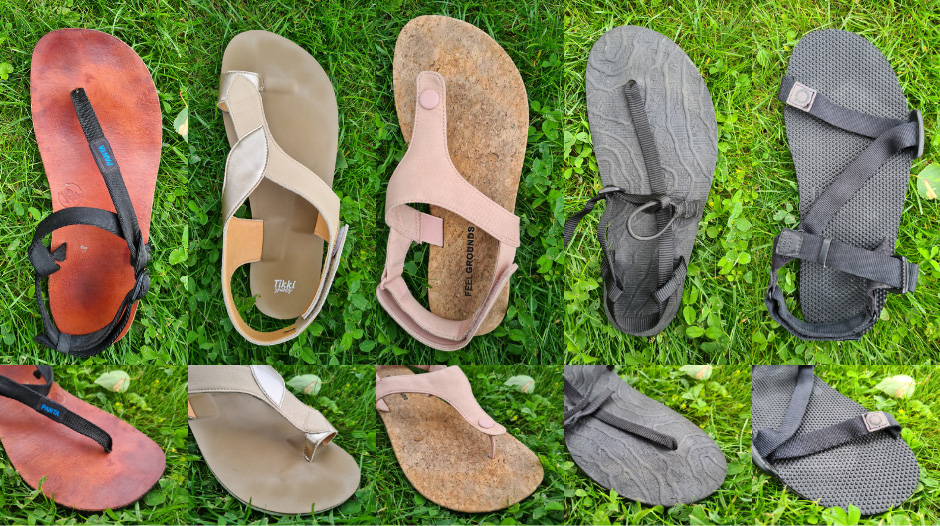
Since sandals are worn barefoot, the material underfoot makes a big difference in how they feel throughout the day.
Here are some common footbed materials and what to expect:
- Smooth leather: Soft and breathable, but not water-friendly. Can feel slippery when wet.
- Suede leather: More grip and comfort in heat, but also sensitive to water.
- Microfiber: Lightweight and often water-resistant, but can become slippery when wet.
- Cork: Comfortable and breathable with a natural feel.
- Non-slip footbeds: Found in performance models, great for wet conditions
📌 Tip: On very hot days, textured footbeds can sometimes irritate the skin with extended wear. If you have sensitive feet, opt for softer or smoother surfaces.
Sandal Fastening Methods
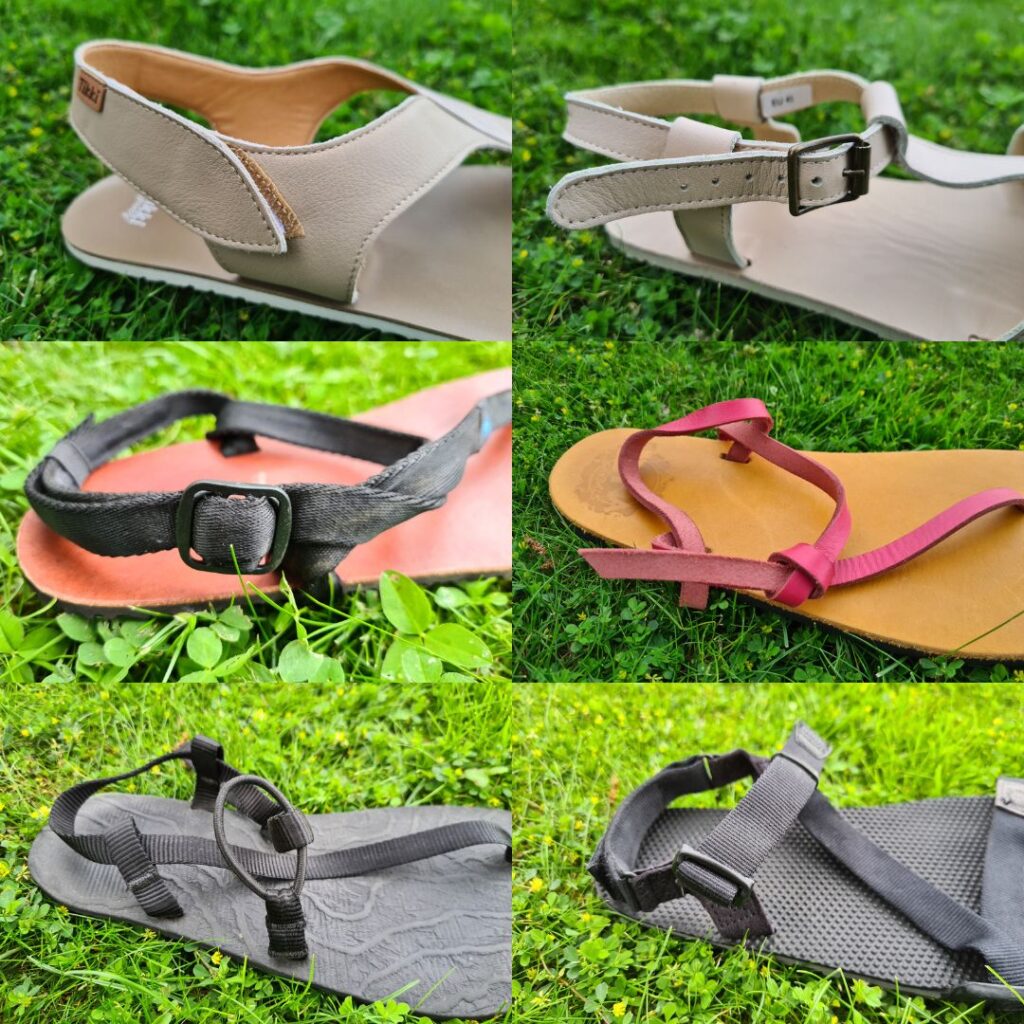
- Buckle: Stylish but slower fastening.
- Velcro Straps: Quick, convenient for casual use.
- Adjustable Straps: Customizable fit, usually set once.
- Traditional Huarache Ties: Require occasional adjustments but provide a secure, customizable fit.
There are many ways to fasten sandals, each with its own advantages and disadvantages. There is no one right way, it all depends on which way you prefer.
Explore Barefoot Sandal Brands
Now that you know what to look for in terms of fit, sizing, straps, and soles, you’re ready to explore the options. We’ve put together detailed brand lists to help you compare styles, materials, and availability.
👉 Browse the Complete List of Barefoot Sandals for Adults
👉 Looking for kids’ options? See our Complete List of Barefoot Sandals for Kids
👉 For comfort and grip in outdoor activities, check our Best Multi-Sport Barefoot Sandals
👉 Want a stylish everyday pair? Check out our Best Barefoot Sandals for Women
👉 Prefer sandals that feel like Birkenstocks? Don’t miss Barefoot Sandals Like Birkenstocks
👉 Shopping for a special occasion? Explore Barefoot Wedding Shoes for Brides and Guests


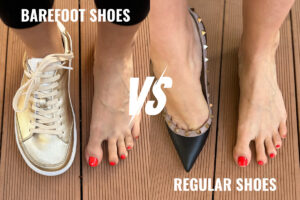
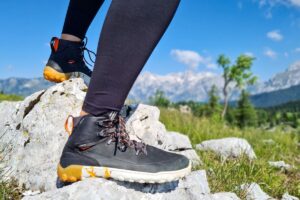
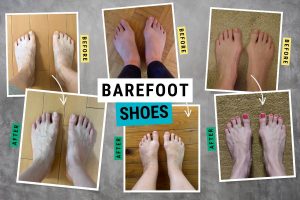
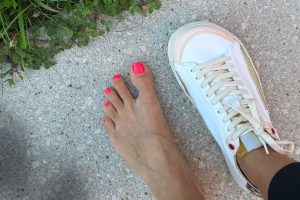
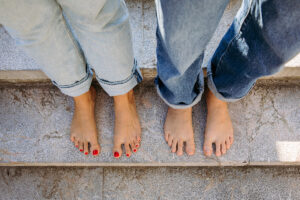
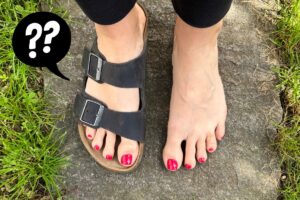
Thank you for your site. I’m looking for a place to order actual shoes for my duck-shaped toes. I’d love to find a place to buy custom shoes since sandals can’t be worn well in cold weather.
Hi Jeanette, for custom-made shoes, please check this post here: https://barefootuniverse.com/custom-barefoot-shoes/